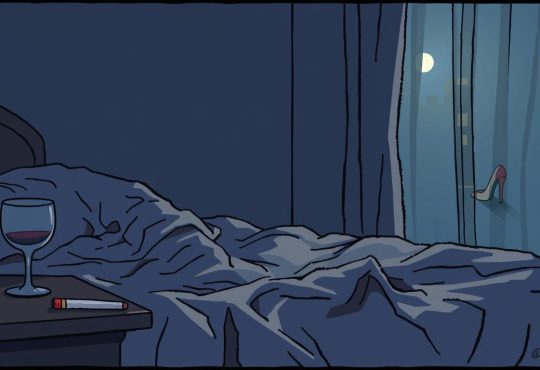
Have you ever wondered if someone at work feels more than just professional admiration? Workplace dynamics can be tricky, especially when emotions are involved. Understanding subtle cues can help decode what’s really going on.
Many women express interest in subtle ways, often blending it into everyday interactions. From playful teasing to maintaining eye contact, these gestures can hint at deeper feelings. Recognizing these signs can open doors to meaningful connections.
In this article, we’ll explore key behaviors that might indicate romantic interest. Whether it’s sharing inside jokes or initiating social activities, these actions often speak louder than words. Stay tuned for actionable insights to navigate workplace relationships with confidence.
On this Page:
- 1 Recognizing Subtle Cues in the Workplace
- 2 Body Language and Eye Contact That Speak Volumes
- 3 Signs a Female Coworker Likes You But Is Hiding It: A Comprehensive List
- 4 Verbal Signals and Flirtatious Conversations
- 5 Beyond Work: Social Activities and One-on-One Moments
- 6 Subtle Behaviors That Showcase Extra Consideration
- 7 Non-Work Interactions and Discreet Interest
- 8 Navigating Workplace Romance: Risks and Rewards
- 9 Conclusion
Recognizing Subtle Cues in the Workplace
Decoding workplace interactions can reveal more than meets the eye. Nonverbal behaviors often carry hidden meanings, offering insights into someone’s true feelings. Understanding these cues can help navigate professional relationships with clarity and confidence.
Observing Nonverbal Behaviors
Body language plays a significant role in communication. A quick smile or a slight lean during conversation can indicate genuine interest. These gestures often go unnoticed but can reveal a lot about a person’s emotions.
For example, if someone frequently makes an effort to come closer or maintains open posture, it might hint at a deeper connection. Observing these patterns over time can provide more clarity than isolated instances.
Understanding the Importance of Context
Context is everything when interpreting nonverbal cues. A friendly smile or a casual joke might not always signify romantic interest. It’s essential to consider the situation and the individual’s usual behavior.
For instance, a woman who leans in during a work discussion might simply be engaged in the topic. Distinguishing between professional politeness and personal signals requires careful observation and understanding of the bigger picture.
By paying attention to these details, we can better navigate the complexities of workplace relationships. Next, we’ll dive deeper into specific body language cues that speak volumes.
Body Language and Eye Contact That Speak Volumes
Body language often reveals what words don’t say. In the workplace, subtle gestures can hint at deeper emotions. Understanding these cues can help us navigate relationships with clarity and confidence.
Smiles, Posture, and Proximity
A genuine smile can be a strong signal of interest. When someone smiles often in your presence, it may indicate a positive connection. Good posture and open body language also suggest comfort and engagement.
Proximity is another key factor. If a person frequently moves closer during conversations, it could hint at hidden attraction. These behaviors are often subconscious but speak volumes about their feelings.
The Power of Extended Eye Contact
Eye contact is one of the most telling nonverbal cues. When someone holds your gaze longer than usual, it can be an invitation for further interaction. This is especially true if it happens repeatedly.
Studies show that 90% of women acknowledge prolonged eye contact as a sign of attraction. Comparing casual glances to lingering looks can help distinguish polite behavior from genuine interest.
By paying attention to these clusters of signals, we can better understand the dynamics at play. Trusting our instincts and observing patterns over time can provide valuable insights.
Signs a Female Coworker Likes You But Is Hiding It: A Comprehensive List
Workplace dynamics can reveal hidden emotions through subtle actions. From playful teasing to thoughtful gestures, these behaviors often hint at deeper feelings. Recognizing these patterns can help us navigate professional relationships with clarity and confidence.
Playful Teasing and Inside Jokes
Playful teasing is a common way to mask genuine affection. When someone frequently jokes with you or creates inside jokes, it often signals a desire for a closer connection. These interactions go beyond typical office banter, showing effort to build a unique bond.
For example, if a colleague often references shared moments or laughs at your quirks, it might indicate hidden interest. Over time, these jokes can create a sense of intimacy, making the relationship feel more personal.
Genuine Compliments and Thoughtful Gestures
Genuine compliments are another clear sign of interest. When someone goes out of their way to praise your work or appearance, it shows they’re paying attention. These compliments often feel more personal than generic office politeness.
Thoughtful gestures, like bringing your favorite coffee or remembering small details, also speak volumes. These actions demonstrate effort and consideration, suggesting a desire to connect on a deeper level.
By observing these behaviors consistently, we can better understand the dynamics at play. Trusting our instincts and looking for patterns over time can provide valuable insights into hidden feelings.
Verbal Signals and Flirtatious Conversations
Words and tone can be powerful indicators of deeper emotions. In the workplace, casual banter and personal questions often carry hidden meanings. Understanding these verbal cues can help us navigate relationships with clarity and confidence.
Casual Banter and Personal Questions
Casual conversations at work might include more personal inquiries than usual. For example, someone might ask about your hobbies or weekend plans. These questions often signal extra interest beyond professional topics.
A light, flirtatious tone combined with humor can also stand out. If a person frequently teases you or shares inside jokes, it might hint at a desire for a closer connection. These interactions often feel more personal than typical office banter.
Gradual Escalation in Conversation Topics
Over time, conversations might shift from work-related topics to more personal ones. This gradual escalation can be a clear sign of attraction. For instance, someone might ask about your family or future goals.
It’s important to distinguish between friendly banter and genuine flirtation. Friendly conversations are usually casual and broad, while flirtatious ones often focus on you specifically. Paying attention to these details can provide valuable insights.
By observing these patterns, we can better understand the dynamics at play. Responding with warmth and professionalism encourages further interaction without overstepping boundaries. Attentive listening and thoughtful replies often pave the way for deeper connections.
Beyond Work: Social Activities and One-on-One Moments
Social interactions outside the office can reveal hidden layers of connection. When a person invites you to lunch or coffee breaks, it might be more than just routine courtesy. These moments provide opportunities to build rapport and explore shared interests beyond the job.
Initiating Lunch Dates and Coffee Breaks
Invitations to lunch or coffee often signal a desire to spend time together in a relaxed setting. For example, if someone consistently suggests grabbing a cup of coffee or eating lunch together, it could indicate personal interest. These small gestures show effort to create one-on-one moments.
Subtle changes in tone, like using warm or casual language, can also hint at deeper feelings. A person might say, “Let’s take a break and grab something to eat,” instead of a formal invitation. These nuances can make the interaction feel more personal and less professional.
Discussing Life Outside the Office
Conversations about hobbies, family, or weekend plans often go beyond typical work topics. When someone shares details about their personal life, it shows trust and a desire to connect on a deeper level. These discussions can strengthen the relationship and build mutual understanding.
For instance, if a colleague frequently asks about your weekend or shares stories about their own, it might signal more than just friendly curiosity. Over time, these exchanges can transition into meaningful conversations about shared interests and experiences.
By paying attention to these social activities, we can better understand the dynamics at play. Consistency in invitations and openness in conversations are strong indicators of genuine interest.
Subtle Behaviors That Showcase Extra Consideration
Small acts of kindness at work can reveal deeper feelings. When someone goes out of their way to offer support, it often hints at more than just professional courtesy. These gestures, though subtle, can build a sense of closeness and trust over time.
Support During Tough Workdays
When a person notices you’re having a challenging day, their readiness to help can be telling. For example, they might offer advice or simply lend a listening ear. These actions show they’re paying attention and genuinely care about your well-being.
Such consideration often goes beyond the norm of workplace politeness. It’s not just about being friendly; it’s about creating a meaningful connection. Repeated gestures like these can strengthen the bond between two people.
Studies suggest that empathy plays a key role in building emotional connections. When someone consistently shows support during tough times, it’s a promising sign of hidden affection. These behaviors, though subtle, are unmistakably genuine.
By recognizing these patterns, we can better understand the dynamics at play. Extra care during difficult workdays is a meaningful signal worth paying attention to.
Non-Work Interactions and Discreet Interest
Interactions outside the office can often reveal more than meets the eye. When someone takes the initiative to connect beyond professional settings, it may hint at a deeper level of interest. These moments, though subtle, can provide valuable insights into their true feelings.
Texting Outside Office Hours
Texting after work is a clear departure from strictly professional communication. When someone sends messages about non-work topics or checks in casually, it shows they’re thinking about you beyond the job. These texts often carry a friendly tone, making the interaction feel more personal.
For example, a quick message asking about your day or sharing a funny meme can signal a desire to stay connected. The frequency and timing of these messages matter as much as their content. Consistent after-hours communication often indicates a wish to build a closer bond.
Making Time for Private Conversations
Initiating private chats shows a willingness to share more personal details. Whether it’s scheduling a coffee break or finding a quiet moment to talk, these efforts highlight genuine interest. Such conversations often go beyond work-related topics, diving into hobbies, family, or future plans.
For instance, someone might ask about your weekend or share stories about their own life. These exchanges create a sense of intimacy, making the relationship feel more meaningful. Over time, these private moments can strengthen the connection between two people.
By paying attention to these interactions, we can better understand the dynamics at play. While not all after-hours communications imply romance, they often serve as a bridge to more meaningful connections. Being mindful of tone and context helps gauge genuine interest while maintaining professionalism.
Exploring personal connections at work can be both rewarding and challenging. Workplace romances offer opportunities for meaningful relationships but come with potential complications. Understanding the balance between personal interest and professional expectations is key to navigating these dynamics successfully.
Understanding Company Policies
Before pursuing any personal connection at work, it’s essential to understand company policies. Many organizations have guidelines addressing workplace relationships to prevent conflicts of interest. Clear policies help maintain professionalism and protect both parties involved.
For example, some companies require employees to disclose romantic relationships if they work in the same department. Others may have strict rules against dating within the same team. Being aware of these policies ensures that personal connections don’t jeopardize your job or career growth.
Managing Mixed Signals
Mixed signals can make workplace romances tricky to navigate. Attentive and respectful communication is crucial to avoid misunderstandings. If you sense mutual interest, having a candid conversation can clarify intentions and set boundaries.
For instance, if a colleague frequently initiates one-on-one meetings or shares personal details, it might be a sign of deeper feelings. Addressing these signals openly helps manage expectations and maintain professionalism. Balancing personal interest with workplace decorum is essential for a healthy dynamic.
Navigating these situations requires awareness of risk factors like gossip and potential conflicts of interest. Weighing the rewards against possible job-related risks ensures that personal connections enhance rather than hinder your professional life.
Conclusion
Navigating professional relationships requires attention to subtle cues. Verbal and nonverbal behaviors often reveal deeper emotions, offering insights into unspoken feelings. Observing patterns in body language, tone, and context can help clarify intentions while maintaining professionalism.
Trusting your instincts is essential, but balancing personal interest with workplace boundaries ensures healthy dynamics. Whether it’s playful banter or thoughtful gestures, these interactions can build meaningful connections when approached thoughtfully.
Before pursuing any personal interest at work, consider the risks and rewards. Reflect on the insights shared here and apply them with care. Understanding workplace dynamics empowers you to navigate relationships confidently and respectfully.
Thank you for exploring these insights with us. We hope this guide helps you foster meaningful connections while maintaining professionalism in your job. Here’s to building stronger, more understanding workplace relationships!










